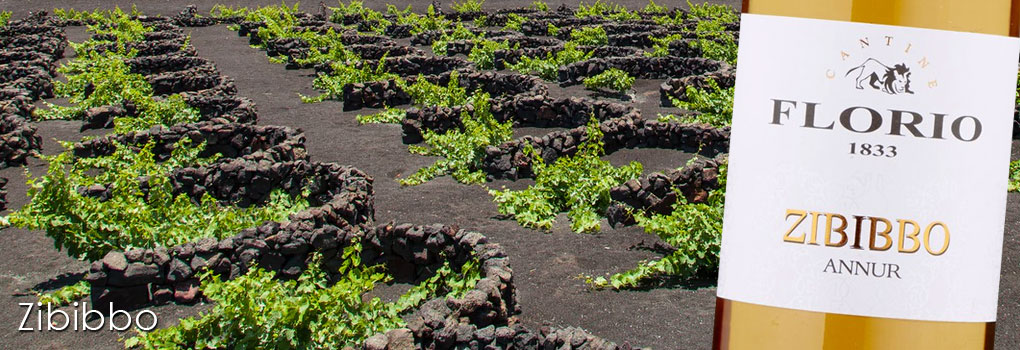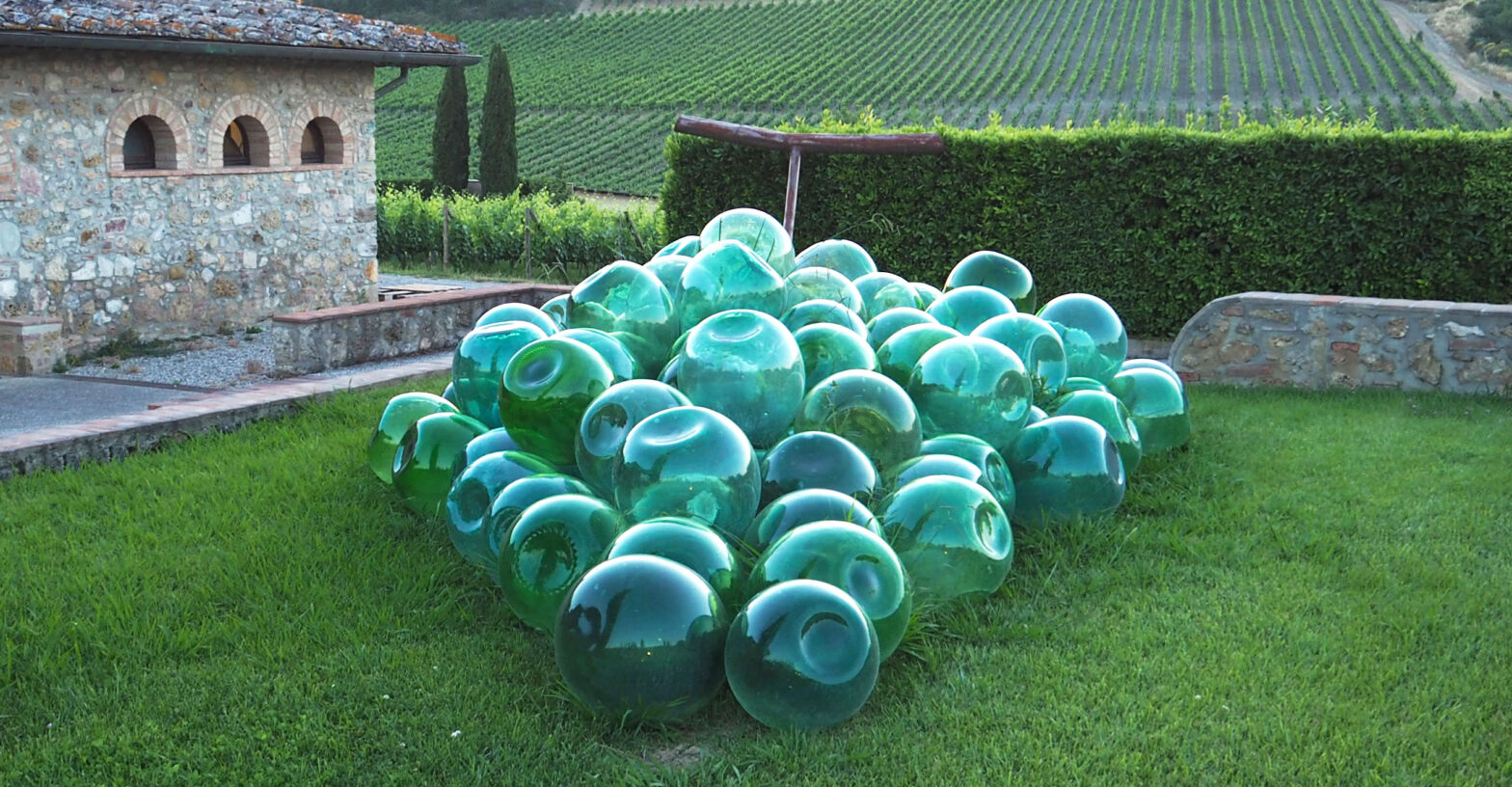The following wine grapes ‘Vitis vinifera’ have their origins in Italy and have been instrumental in the style, character and quality wines crafted in their well-known wine regions. A number of these varietals have found exciting new homes around the globe, the following are brief insights into their personality and influence on the new world of wine.
Arneis:
Arneis is an ancient Italian white wine grape varietal, believed to be native to the Piedmont region. It is most commonly found in the hills of Roero, northwest of Alba, where it is part of the white (DOP) wines of Roero and Langhe. Arneis (means -'little rascal') is so called because it is regarded as a somewhat difficult varietal to grow. It is a crisp and floral varietal, producing white peach and pear scented wines and has been grown for centuries in the region. Arneis wines tend to be dry and light in body with flavours of apples, pears, white peaches, apricots and a hint of almonds.
For centuries Arneis was used to soften the aggressive tannins and harshness of the Nebbiolo red grape in the wines of the Barolo region, much as the French use Viognier in the Northern Rhône wine region.
In a region limited in serious white wine production, Arneis was fortunately saved from complete varietal extinction by an increasing popularity of dry white wines in the 1980s. As of 2019 there was around 900 hectares of Arneis in the Piedmont region. Outside of Italy, there are limited plantings of Arneis in California, Australia and more recently here in New Zealand.
The Arneis varietal can be a difficult grape to ripen, with naturally low acidity and with a tendency to get over ripe if harvested late. For this reason, Arneis seems to perform at its best in cooler climates that are reminiscent of the grapes Piedmont home in the foothills of the northern Italian Alps. The vine's tendency for low cropping yields and for the wine to oxidize easily, contributed to its decline. Better understanding of the grapes nature has helped revive the varietal as winemakers found that the chalky, sandy soils around Roero gave the grapes more acidity and structure - while Arneis grapes planted in sandy clay soil developed an elegant and exotic aroma.
Wines fermented or aged in oak can be more full-bodied while unoaked Arneis can have more structure and aromatics. Arneis is best consumed within a year or two of the vintage, though some producers in Italy make a late harvest 'passito' style Arneis wine.
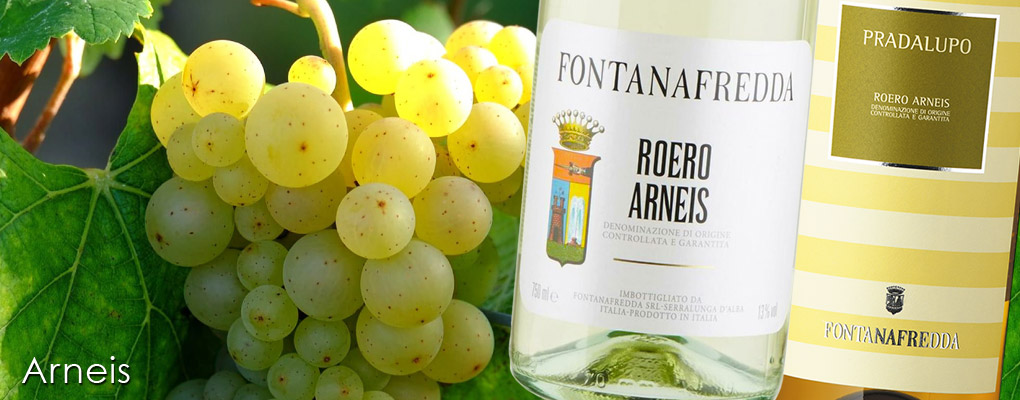
Barbera:
Barbera is an indigenous red wine grape varietal of Italy, and as of 2010 it was the sixth most-planted red varietal in the country. It produces good yields and is known for its deep colour, low tannins and high levels of acidity (unusual for a warm climate red grape).
Century-old vines still exist in some areas - producing long-aging, robust red wines with intense characters and complex tannins. The best known D.O.P appellation is Barbera d'Asti in the Piedmont wine region of northern Italy.
When young, the wines offer a very bright aroma of fresh wild berries. In lighter styles you find notes of cherries, raspberries and blueberries; and notes of blackberry and black cherries in wines made from old vines and riper parcels of fruit.
Many winemakers use oak barrels (of variable sizes & age), which provide increased complexity, aging potential and hints of vanilla. Barbera is believed to have originated in the hills of Monferrato in the central Piedmont region of Italy (around the towns of Asti and Alba), where it has been known since the thirteenth century.
Documents from the cathedral of Casale Monferrato between 1246-1277 detail documents / agreements of vineyard lands planted with 'de bonis vitibus barbexinis' or Barbera, as it was known. In the late 19th and 20th century, waves of Italian migrants took Barbera to the Americas where the vine took root in California, Argentina and then Australia.
Upgraded to its D.O.C.G. classification in 2008, by regulation this wine must consist of at least 85% Barbera and the remaining 15% can comprise of; Freisa, Grignolino and or Dolcetto. The wine must not be released until the 1st March of the year following the harvest - and must be at least 11.5% Alc./vol.
There is also a 'Superiore' designation which requires a minimum of twelve months ageing with at least six months in oak. This is a particularly age worthy wine with the potential to age up to eight years. Aged Barbera is denominated as 'Barbera Superiore' and is sometimes aged in French oak barriques to become 'Barbera Barricato'.
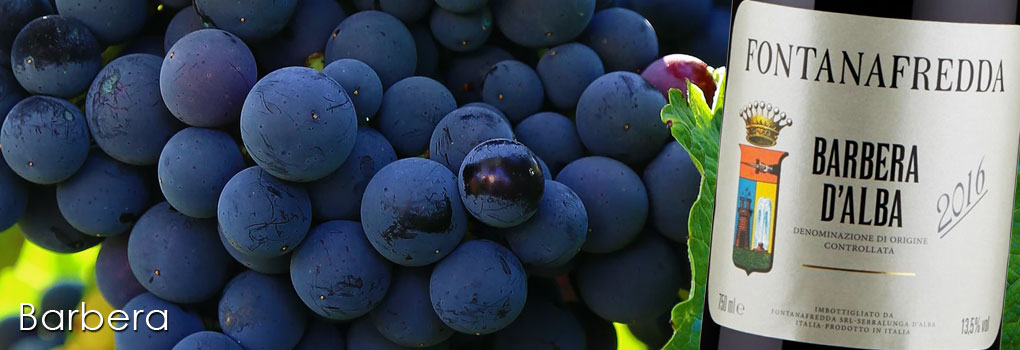
Corvina:
Corvina is a red wine grape varietal with its origins in Italy, it is also known as Corvina Veronese and sometimes Cruina. It is primarily grown in the Veneto region of northeast Italy. In the Veneto region, Corvina is often confused with Corvinone, a red grape usually used in the production of straw wines. For a long time, Corvinone was considered a clone of Corvina but DNA profiling has shown that they are two different varietals.
Corvina, a dark-berried, thick-skinned varietal, is the principal grape in red Valpolicella wines, forming the backbone of the blend with its firm tannins and rich, smoky, red-cherry aromas and flavours. The grapes naturally high acidity can make the wine somewhat tart with bitter almond characters and the finish is sometimes marked with a sour cherry note.
In some regions of Valpolicella, producers are using barrel aging to add more structure and palate complexity to the wine. The small berries of Corvina are low in tannins and colour extract but have thick skins that are ideal for drying and protecting the grape from rot.
Corvina is used with several other grapes to create the very popular regional wines: Bardolino, Valpolicella, Amarone and Recioto. In Valpolicella, Corvina generally make up to 70% of the wine. It can also be used as high as 85% in some parts of Southern Italy. Corvina based wines appeal to wine enthusiasts at all levels who love fruit driven red wines. The quality of Valpolicella Classico Superiore has greatly improved over the past 10-15 years and Amarone continues to grow and impress enthusiasts the world over.
Corvina is made in several styles: an approachable dry to off-dry fruit driven style like Valpolicella Classico, in a 'Ripasso' style which incorporates Valpolicella with a dose of the rich 'Amarone' juice - giving it a fuller palate. Amarone wines range in style from premium, full-throttled fruit driven wines with scents of smoked meats and spice notes - to crafting wines of defined quality, often described as engaging wines.
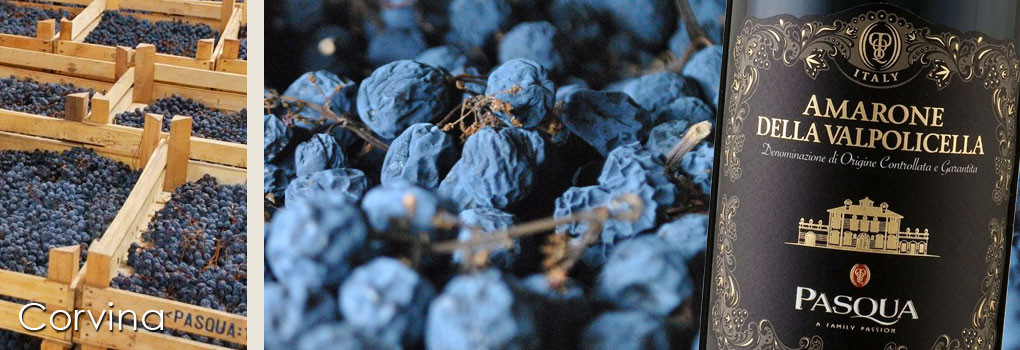
Fiano:
Fiano is a white wine grape varietal that is grown mainly in the Campania wine region of southern Italy - along with Puglia and on the island of Sicily. In Campania this grape is higher respected around the town of Avellino where a D.O.C.G wine Fiano di Avellino is produced. The grape has a long history in the Campania region and is thought to have been the grape used in the ancient Roman wine Apianum. The name Apianum is still permitted today to appear on some wine labels of D.O.C.G wines.
In Australia, a handful of wine producers have been using to use the grape, crafting aromatic, lower alcohol, food friendly dry white wines . Planted vineyards and production is currently small, but two places showing good results are in the McLaren Vale and Rutherglen wine regions of Australia.
Also recently, some winemakers in Argentina are producing Fiano in the La Rioja wine district north of Mendoza. Ampelographers and wine historians have linked Fiano with southern Italy, and believe it has origins in ancient Roman viticulture and perhaps may have even been cultivated by the ancient Greeks. Fiano is a small, thick-skinned berry that typically produces very little juice - and given the vines natural tendency for low yields, can make Fiano a difficult varietal to grow.
In recent years, the varietal has enjoyed a lift in plantings - (with around 1400 hectares in 2016) - as southern Italian wineries invest in modernized winemaking equipment and techniques, as well as a desire to revitalize old indigenous grape varietals.
For the Fiano di Avellino DOCG, at least 85% of the wine must be made from Fiano with Greco, Coda di Volpe and Trebbiano allowed in the blend. Grapes destined for this DOCG wine must be limited to a maximum harvest yield of 10 tonnes per hectare and fermented to a minimum alcohol level of 11.5% Alc.
When just bottled Fiano is invitingly aromatic with floral and honey notes that over time these develop spicy and almond, hazelnut characters that lead into vibrant flavours. The introduction of modern winemaking and an emphasis on limiting oxidation and retaining varietal freshness, have improved the overall quality of Fiano wines
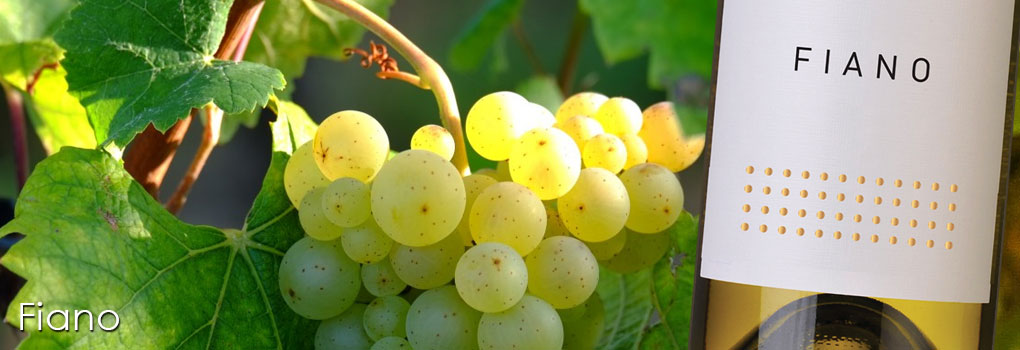
Garganega:
Garganega is a white wine grape varietal predominantly grown around Verona in the Veneto region of north-east Italy. Until recently is was one of Italy's most planted white varietals. It forms the basis of Venetian white wine Soave DOP's - as well as the Soave Superiore DOCG - and more recently being blended with Pinot Grigio.
In the Soave wine region, Garganega is the main varietal making up between 70 - 100% of blended wines with the usual suspects Trebbiano and Chardonnay. In the 'Classico' wine zone of Soave, where yields are controlled and kept low, the grape can produce a delicate wine with citrus, almond and dried herb notes. Across Italy, there are small plantings in the wine areas of Umbria and Friuli.
When grown on the island of Sicily it is locally known as Grecanico Dorato; here it ripens late and can produce a wine with lively, tangy acidity. Garganega's naturally high levels of acidity, lend itself well to the production of 'sweet recioto' wines that have the potential to improve with bottle age for a decade and more.
DNA testing has not yet clearly identified the genetic parents of Garganega; there is currency a relationship between 7 grape varietals that are spread from north to south of Italy - which possibly indicates that Garganega is a key varietal in the pedigree of several classic white Italian grape varietals.
Garganega reflects the environment and the manner in which it is grown. In cooler sites it exhibits flinty, green apple characteristics as well as good structure derived from its well-defined acidity. Warmer sites produce wines with a delicate expression, with citrus and stone-fruit flavours. However, all of these characteristics can be easily diluted if the vines are allowed to follow their natural inclination to over crop.
Further south in the region of Umbria, the hills of Colli Amerini and Colli Perugini are home to some Garganega vines whose grapes are used as a minor blending ingredient for dry white and sparkling (spumante) wines. Garganega is also plays a minor role in Bianco di Custoza DOP and Colli Euganei DOP wines.

Glera:
Glera is a white wine grape varietal with Italian origins - and yes, until 2009 was typically referred to as Prosecco. Glera is a delicate grape varietal, primarily grown for use in sparkling Italian wine styles; i.e. Method Italiano - from the various Prosecco DOC and DOCG areas. It is grown mainly in the Veneto wine region of north-east Italy, traditionally in an area between Conegliano and Valdobbiadene, in the steep hills north of Treviso.
Glera is an old varietal, with its former name Prosecco being derived from the village Prosecco near Trieste, where the grape is thought to have originated. It has been proposed that it was grown in Roman times and now ranks about 6th in importance among the country's nearly 2000 indigenous grape varietals.
Prosecco was traditionally used as the name for both the grape varietal and the sparkling wine produced. Prosecco di Conegliano-Valdobbiadene, Prosecco di Conegliano and Prosecco di Valdobbiadene all had DOP status, and there was also an IGP zone surrounding it.
When the higher DOCG status was sought for Prosecco di Conegliano e Valdobbiadene, it became a complication that the grape (which is now grown over a larger area) and the protected designation of origin had the same name. To resolve the issue, the old synonym Glera was officially adopted for the varietal as the same time as the DOCG was approved in 2009. The change was also made to reduce the possibility of sparkling wines of other origin being labeled as 'Prosecco' by using the grape varietals name. The name change is a move along the lines of the reservation of the term 'Champagne' only for wines made in the Champagne wine region of France.
Glera is a white grape with lower acidity levels, and generally grown in warmer climates than the varietals used for Méthode Traditionnelle. Grapes with lower levels of acidity are said to be softer as a result of the lighter body feel that is sensed from the reduced grape structure. It is this softer structure that is precisely what is appreciated about Prosecco, it also carries less acidic-mouth-tang. As a result of the softer structure, Glera needs a less demanding process to infuse it with those precious bubbles.
When treated with a secondary fermentation in bottle, a grape with these softer structural elements ends up cloudy both in colour and in flavour. Using the 'Metodo Italiano' method - Prosecco is not only softer than sparkling wines made with double fermentation, it also results in a brighter style and more affordable wine.

Montepulciano:
Montepulciano is a red wine grape varietal, with it origins in central Italy - and most renowned for its primary role in the DOCG wine Montepulciano d'Abruzzo.
Montepulciano d'Abruzzo comes from the mountainous region of Abruzzi on the Adriatic coast of central Italy. In Italy Montepulciano is also known as Cordisco, Morellone, Primaticcio, and Uva Abruzzi. It is important not to confuse it with the Tuscan wine 'Vino Nobile di Montepulciano', which is made from Sangiovese. Named after the village it is produced, rather than containing any Montepulciano in the blend. Montepulciano is widely planted throughout central and southern Italy, most notably in Abruzzo, Campania, Lazio, Marche, Molise and Puglia - and is permitted in DOP wines produced in 20 of Italy's 107 provinces.
Montepulciano is rarely found in northern parts of Italy because the grape has a tendency to ripen late and can be excessively 'green' if harvested early or not ripe.
Montepulciano likely originated in Tuscany and may be related to Sangiovese of which the two grapes are often confused with. After Sangiovese, Montepulciano is Italy's second most widely planted indigenous red grape varietal.
The skins have a fair amount of pigmented tannins and colour producing phenols that with maceration can produce a deep ruby coloured wine. Compared to most Italian red varietals, Montepulciano produces smooth, approachable wines that can develop for three or four years after vintage.
Montepulciano wines are typically fruit driven and dry with soft tannins, and so are often enjoyed young. Over time, the wine turns to garnet red during its maturation. With a fairly intense nose of strawberry, ripe plums and berry fruits, combined with leather and subtle red flowers, these smooth drinking wines often have a hint of pepper and spice, making them the perfect complement to the region's rustic cuisine.
If chosen to be aged by the winery for more than two years, the wine will be labelled 'Riserva' - and can pair them with hearty Italian cuisine or with aged hard cheeses - enjoy.
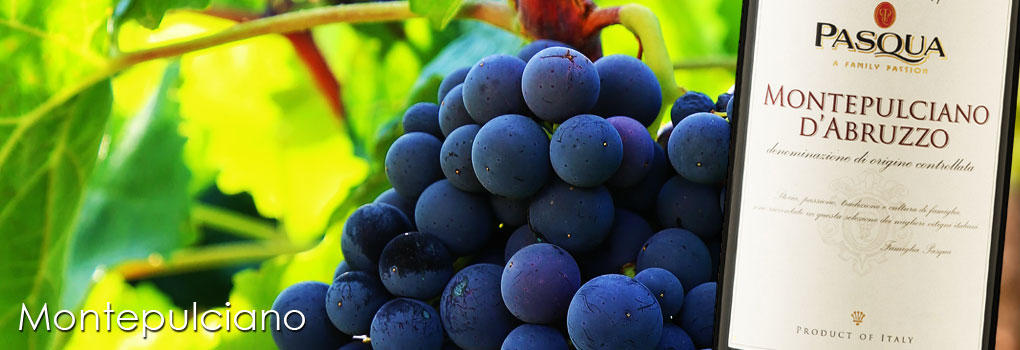
Nebbiolo:
Nebbiolo is a red wine grape varietal predominately linked with the Piedmont wine region of northen Italy - where it makes the D.O.C.G. wines of Barolo and Barbaresco. The name Nebbiolo is thought to stem from the Piedmontese word 'nebbia' which means 'fog'. As during harvest time, which typically takes place in October, a thick fog sets in on the Langhe region where these Nebbiolo vineyards are planted.
Other explanations refer to the fog-like 'bloom' that forms over the berries just before harvest or that perhaps the name stems from the Italian word 'nobile', which translates to noble.
Nebbiolo is an important varietal, and famous for producing world renowned red wines - in reality, this grape makes up only 5% of all the wines produced in the Piedmont area.
There are twice as many hectares planted with Dolcetto and nearly ten times more Barbera. A reason for this - Nebbiolo is one of the more problematic varietals for both viticulturists and winemakers to work with. It is very sensitive to both soil and geography and can yield wines that vary widely in body, tannin and acidity, as well as aroma and flavour complexity.
A late ripening grape, the vines need the best exposures, especially in cooler climates, in order to reach maturity. It performs better in calcareous rather than sandy soils. Nebbiolo grape skins are relatively thin, but quite tough and fairly resistant to molds and other pests.
Many winemakers and in particular local viticulturists feel that the Nebbiolo varietal can be even more difficult to get physiologically ripe and work with in the winery than Pinot Noir. It can be changeable, moody and unpredictable while undergoing typical vinification and aging procedures in the winery.
Nebbiolo traditionally produces lightly coloured red wines that can be high in tannins and with aromas of red berries, liquorice, violets and roses. As they age, the wines take on a characteristic brick-orange hue around the rim of the glass and mature to reveal other aromas and flavours such as violets, liquorice, wild herbs, dark cherries, wild raspberries, truffles and tobacco. Nebbiolo wines can reward several years of aging to balance out their natural tannins with other varietal characteristics, resulting in rich, complex wines - enjoy.
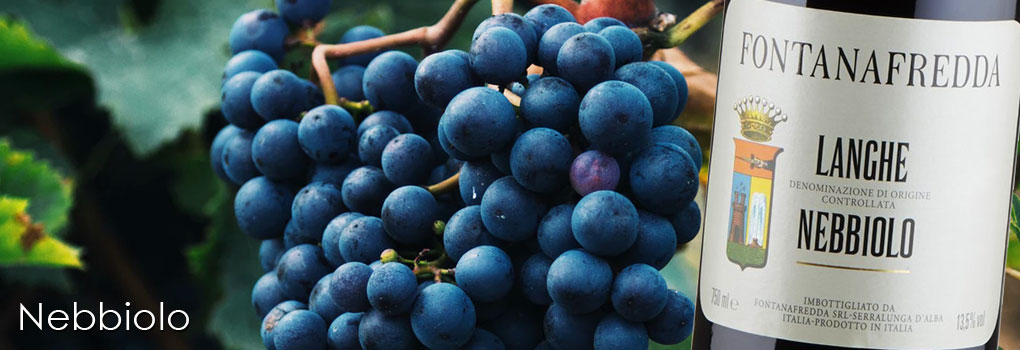
Nero d'Avola:
Nero d'Avola is a red wine grape varietal - thought to be the most important red wine varietal in Sicily - Italy. Pronounced 'Neh-roe Dah-voe-lah' and translates to 'The black grape of Avola' in Italian. Nero d'Avola is one of Italy's most important indigenous varietals - and named after Avola, a small town situated in the far south of Sicily.
Up to the 1980s, commercial use of Nero d'Avola was dedicated almost exclusively to fortifying weaker red wines in northern Italy and in France. Used to add colour and palate weight to lighter reds, prompting some French producers to nickname it 'le vin medecine'.
In the past Nero d'Avola, like other Sicilian reds, was often syrupy, with an alcohol content reaching 18% Alc. - too strong as table wines, but very suited to making Marsala.
With new viticultural techniques - such as night harvesting - placing the grapes in cooled stainless steels tanks to prevent premature fermentation - have been used to retain flavour without producing an overpowering wine. The result is often compared to Syrah wines, made in the 'New World'.
Boasting a singular climate, Sicily is blessed with consistent growing seasons, typified by lots of warm sunshine and very little rain. Vintage quality varies, of course, but not as much as it does in say Piedmont or Burgundy.
In Sicily, Nero d'Avola is also known as 'Calabrese', - which is likely to be an 'Italianization' of ancient vernacular name of Nero d'Avola, being 'Calaurisi', which literally means 'coming from Calabria'. As recently as the 1980's, plantings of Nero d'Avola were declining in Sicily - as many growers switched to international varietals thought more commercial. But now Nero d'Avola is coming back (as of 2015 with approximately 16,600 ha planted) as the native grape earns a growing reputation in its own right, making wines from 100% of the varietal rather than blended wine styles.
The vine likes hot arid conditions - and make a rich, perfumed and velvety red wine that is easy to drink, and works well in blends with other varietals, and can benefit from the careful use of oak, and able to age for quite a few years, although most are good drinking upon release.
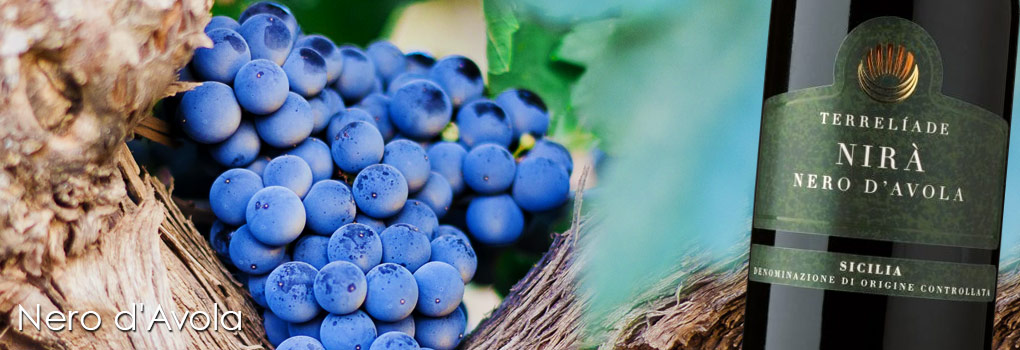
Primitivo:
Primitivo is a red wine grape varietal grown principally in the Apulia (Puglia) region in southern Italy. The first documented use of the term Primitivo appears in Italian governmental records of the 1870s. The name derives from the terms 'primativus' or 'primaticcio', which refer to the grape's tendency to ripen earlier than other varietals.
Primitivo is now thought to have been introduced as a distinct clone into the Apulia region of Italy in the 18th century. Don Francesco Filippo Indellicati, the priest of the church at Gioia del Colle near Bari, selected an early (primo) ripening plant of the Zagarese varietal and planted it in Liponti. This clone ripened at the end of August and became widespread throughout the northern areas of Puglia.
Zinfandel long considered 'America's own vine and wine', but when University of California, Davis (UCD) professor Austin Goheen visited Italy in 1967, he noticed how wine produced from Primitivo reminded him of Zinfandel.
In 1993, Meredith used DNA testing to confirm that Primitivo and Zinfandel are clones of the same varietal. Then comparative field trials have found that Primitivo selections were generally superior to those of Zinfandel, having earlier fruit maturity, similar or higher yield, and similar or lower rot susceptibility.
The European Union recognized Zinfandel as a synonym for Primitivo in January 1999, meaning that Italian Primitivo wines can be labelled as Zinfandel in the States - and any other country that recognises EU labeling laws.
Most Primitivo is grown in Puglia (Apulia), the geographic 'heel' of Italy. Historically, the grape was fermented and shipped north to Tuscany and Piedmont where it was used as a blending grape to enhance the body of thin red wines produced. This wine is also characterised by an unusually high alcohol by volume - around 14%.
Wines made from Primitivo have notes of red plums and dried spices. Zinfandel on the other hand, because of different soils and climate, the fruit character can be less ripe, and the structure is more akin to old world wines, with rustic earthy notes.

Rondinella:
Rondinella is a red wine grape varietal predominantly grown in the Veneto region of Italy - *(as of 2019 there was around 2480 hectares of Rondinella planted across the country) - and is an integral grape used in wines such as Bardolino and Valpolicella. It is often blended with the varietals Molinara and Corvina, which in 2005 DNA testing showed that Corvina was a parent varietal to the so called Venetian grape Rondinella.
Rondinella grows easily all over the Valpolicella region, though the grape has rather neutral flavours but is favoured by growers due to its abundant yields than for any notable quality. The vine is very resistant to grape disease and produces grapes that, while they do not essentially have high sugar levels - they do dry out well for use in the production of ‘straw wines’ - the ‘Appassimento Method’.
Simply - this is a method of drying grapes for specific kinds of wine production like; 'Amarone' - which is a strong red wine made from dried grapes - and ‘Recioto’ blends, which is a dessert wine produced in Valpolicella.
The Rondinella word means ‘small swallow’, the name of this grape varietal probably comes from the shape of its leaves that look similar to a swallow’s tail. These blended Venetian red wines can be light, fragrant and reminiscent of cherries, strawberries and flowers with a slight bitter-almond finish. The Rondinella grape represents approximately 20-30% of the combination of grapes for Valpolicella and Amarone wines.
Rondinella is very rustic, generous and adapted for soils having a high content of clay and which are not well exposed. The grape berries are dark coloured, relatively small and round in shape, the bunches are of medium in size, loosely packed and have a cylindrical shape. It is perfectly adapted for drying and shrivelling ideal for the drying process which makes Amarone wine, especially from vines that have been grown in the hills in poor soil.
Wines crafted from this varietal have an intense ruby red colour and gentle aroma. Fruit driven, not too high in tannins, and having a good palate structure. Some cuisine options that pairs well with Rondinella wines include roast lamb with peppers, braised herb crusted lamb with a light wine sauce, plus a well flavoured pasta dish, varied pizzas & kebab's to name a few - enjoy.
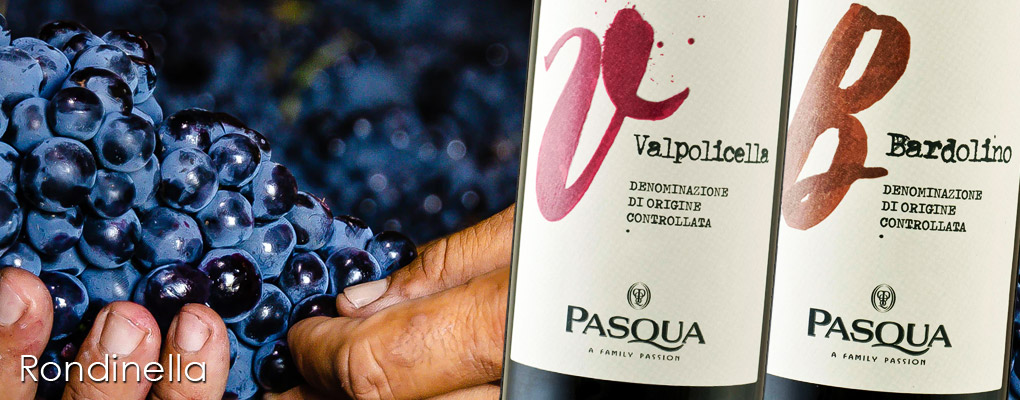
Sagrantino:
Sagrantino is a red wine grape varietal with its origins in the Umbria region of central Italy. Found in the province of Perugia - around the commune of Montefalco, where some of that region's most distinctive and exciting red wines are made.
Planted predominantly around the village of Montefalco and surrounding areas, there are a dozen or so producers that work with this varietal, with approximately 300 ha planted - (950 ha in total across Italy). With such small production, the wine is not widely known outside of Italy, even though it was granted DOCG status in 1992. The origins of Sagrantino are still a little vague, but what is known - it was primarily used for dessert wines, with the grapes being dried in the 'passito' style, much like a 'Recioto di Valpolicella'.
At some point in time, the wines started to be crafted into a dry style, and this is how they are predominantly produced today.
The Sagrantino grape is one of the most tannic varietals in the world, and creates wines that are inky purple with an almost-black centre. Sagrantino has higher tannin levels than almost any other varietals, including Nebbiolo. Thus a well made Sagrantino has excellent aging potential; indeed, given its firm tannins, Sagrantino demands a good length of time in the bottle before it should be opened. The bouquet showcases dark, rich berries and fruits with hints of plum, spices, cinnamon, and earthy undertones.
The Sagrantino di Montefalco DOCG requires 100% Sagrantino grapes to be used, with a required 37 months aging before release, of which at least 12 months are in oak barrels and 4 months in bottle. Sagrantino has as excellent ageing ability.
Several wineries do produce a more approachable style of 'Montefalco' - these usually contain only about 10-15% Sagrantino and up to 70% Sangiovese with the remainder being Cabernet Sauvignon or Merlot, though some winemakers also use Colorino in the blend. A dynamic and exciting wine to look out for on your travels, best enjoyed with well flavoured red meat dishes and rich, hard cheeses - enjoy.
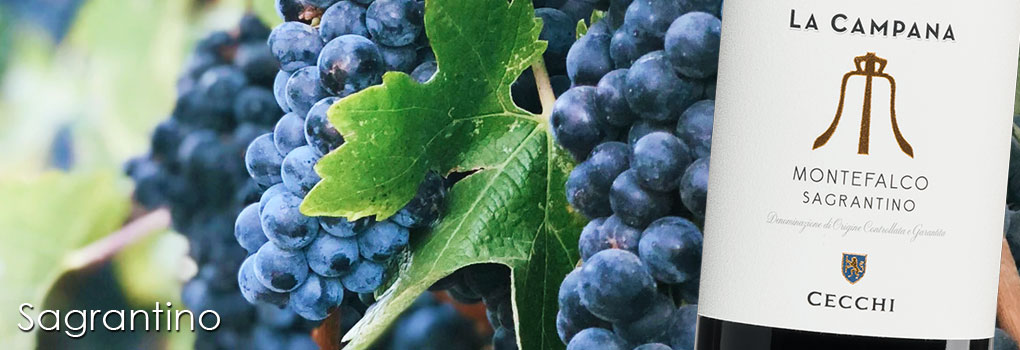
Sangiovese:
Sangiovese is a red wine grape varietal with its origins in Italy. Its name stems from the Latin 'Sanguis Jovis' - 'the blood of Jove (Jupiter)'. It is the primary grape of central Italy from Romagna down to Lazio, Campania and Sicily. Around the globe, Sangiovese is traditonal known as the main component of Chianti, Carmignano, Vino Nobile di Montepulciano and Morellino di Scansano. Though more recently highly respected for creating varietal wines such as Brunello di Montalcino, Rosso di Montalcino or Sangiovese di Romagna, as well as the modern 'Tuscan Trail-blazer' wines like; Ornellaia, Tignanello & Sassicaia.
Sangiovese wines have vibrant fruit flavours, such as rich cherries and mixed, dried spices - plus responds well to oak, creating complimentary flavours when barrel aged.
By the 16th century Sangiovese was well established. Recent DNA analysis suggests that Sangiovese's ancestors are Ciliegiolo (a well known ancient Tuscan grape varietal) and Calabrese Montenuovo - (an almost-extinct varietal from Calabria, the toe of Italy). There are thought to be at least 14 Sangiovese clones, of which 'Brunello' is one of the most respected. An attempt to classify the clones into Sangiovese Grosso (including Brunello) and Sangiovese Piccolo families is an ongoing process.
Sangiovese is very adaptable to many different types of vineyard soils - but seems to respond best in soils with a high concentration of limestone, which can result in elegant wines with generous aromas and palate character. The grape requires a long, warm growing season, as it buds early and is slow to ripen. A longer growing season gives the grapes the opportunity to fully develop palate richness, structure and length.
Wines made from Sangiovese tend to exhibit the varietal's naturally high acidity as well as having moderately high tannins and light to medium intensity of colour.
Sangiovese based wines have the potential to age well, but the vast majority of 'modern style' Sangiovese wines are intended to be more approachable and consumed relatively early. The wines with the longest aging potential are the 'Super Tuscans' and 'Brunello di Montalcino' wines that can age for upwards of 20 years in ideal vintages - enjoy.
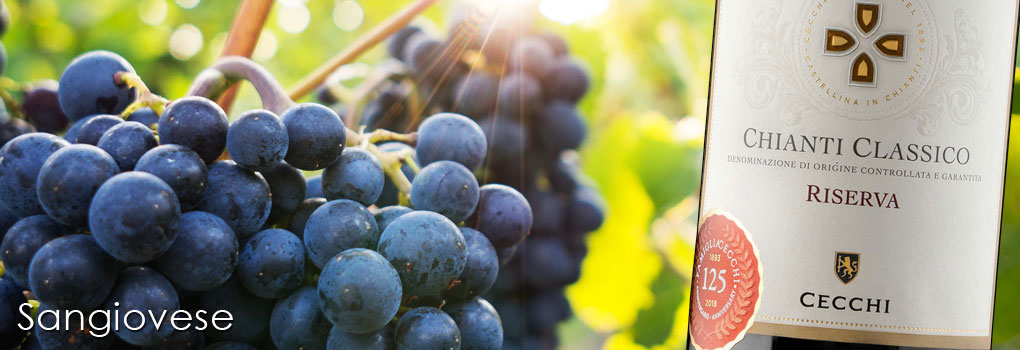
Trebbiano:
Trebbiano is a white wine grape varietal - and is one of the most widely planted grapes in the world. Trebbiano enjoys the title of 'Italy's most planted white grape varietal'. Research and DNA testing shows that Trebbiano is a native varietal to Italy. Trebbiano (also known as Ugni Blanc) is also France's most widely-planted white vine, a phenomenon arising from its migrating to the southern Rhône when the Vatican moved the Papal seat to Avignon in 1305. Under the name 'St. Emilion', Trebbiano is important in brandy production, being the most common grape varietal used in crafting Cognac and Armagnac.
A recent study in Italy published in 2008 using DNA testing showed a close genetic relationship with Garganega (thought to be one parent) and several other varietals.
It is very possible that Garganega is one of the parents of Trebbiano. However, since the parents of Garganega have still to be DNA identified, the exact nature of the relationship can not be conclusively established.
It is mentioned in more than 80 of Italy's DOCs, although it has just 6 of its own: Trebbiano d'Abruzzo, Trebbiano di Aprilia, Trebbiano di Arborea, Trebbiano di Capriano del Colle, Trebbiano di Romagna and Trebbiano Val Trebbia dei Colli Piacentini. Perhaps the most successful Trebbiano-based blend is the Orvieto whites of Umbria, which use a local clone called Procanico. Trebbiano is also used to produce balsamic vinegar.
Because it yields a wine of such neutrality, it is more often blended with other varietals, typically to improve acidity. A good example of this is in Soave - where it is blended with Garganega; in Frascati, with Malvasia; in Verdicchio, with Verdicchio and Malvasia; in Orvieto, with Verdello and Grechetto; and with Malvasia in Vin Santo, a 'passito' in which the grapes are dried to a semi-raisin state and fermented to produce a sweet wine.
A classic Trebbiano table wine is crisp and refreshingly high in acidity. Typical wine tasting descriptors used with this varietal include references to: citrus fruits, white floral notes and mineral components, depending on the terroir of origin - enjoy.
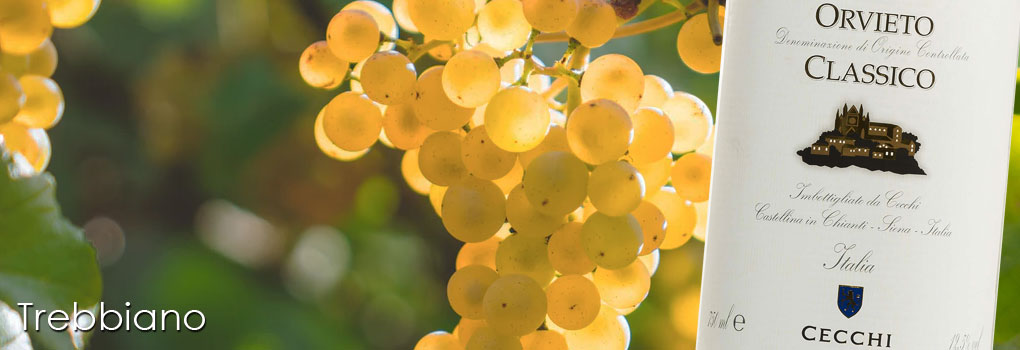
Vermentino:
Vermentino is a white wine grape varietal with strong links to Italy. Vermentino is widely planted in the region of Liguria - Sardinia; where it is known as Pigato. Also grown in Corsica and the northern Piedmont area where it goes under the name Favorita. And is increasingly being planted in the Languedoc-Roussillon wine region of southern France.
Different thoughts on the origins of Vermentino have only recently been given some clarity - with DNA testing confirming Vermentino to be identical to Pigato and Favorita. The Vitis International Variety Catalogue has recently recorded Italy as its origin. It is unclear if Vermentino is also identical to the varietal 'Rollo' found in eastern Provence near Nice - France, which along with Vermentino go under the synonym Rolle.
The most famous wine made from Vermentino is probably the DOCG Vermentino di Gallura (and Vermentino di Gallura Superiore) which is produced in the province of Olbia-Tempio, in the north of Sardinia. The grape is said to have been cultivated under the name Arratelau, since the 14th century. Elsewhere on the island the grape is used for a variety of white wines, including sweet and sparkling styles. The grapes are amber-yellow in colour and hang in pyramid shape bunches. The vines are often grown on slopes facing the sea where they can benefit from additional reflected light and evening breezes. With recent successful plantings in the coastal wine region of Maremma in southern Tuscany.
Vermentino typically exhibits lifted citrus and mineral characters - made as a refreshing dry wine, usually un-oaked and with moderate alcohol. This is essentially a Mediterranean grape varietal, retaining its natural acidity even in relatively warm regions. It is the dominant white wine grape of Sardinia and Corsica plus crossing from Italy to France. The varietal is widely grown through southern France, where it can produce more lively wines than those produced from fuller-bodied varietals such as Grenache Blanc, Marsanne and Viognier.
Vermentino wines are generally light and crisp with a soft tint of colour, sharing characteristics with the Malvasia varietal to which some believe Vermentino is related. The resulting wines are inexpensive and pair extremely well with varied simply seafood and light vegetarian cuisine - enjoy.
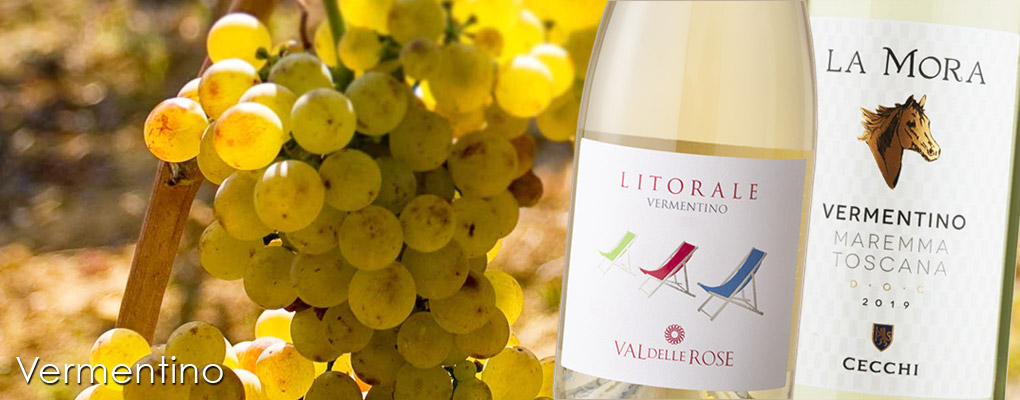
Vernaccia di San Gimignano:
Vernaccia di San Gimignano is a white Italian wine - crafted from the Vernaccia grape varietal, grown around the Italian hill-top town of San Gimignano in Tuscany. Since the 14th century it has been considered one of Italy's finest white wines. It was the first Italian wine to be awarded DOC status in 1966 - then on 9th July 1993 it was upgraded to DOCG.
The word / name Vernaccia loosely means: common, local or native grape. In fact - Vernaccia di San Gimignano is a grape-wine strictly connected to this specific area and cannot be found in any other wine region of Italy.
Vernaccia di San Gimignano's origins are shrouded in the mists of time, over the centuries the vines have adapted superbly to the soils and slopes around San Gimignano.
Internationally, it is possibly the least appreciated Tuscan wine. First - because it is not a red wine and second because this indigenous varietal is naturally high in acidity and not particularly fragrant. In San Gimignano, the Vernaccia grapes planted in sandstone based vineyards tend to produce the best examples of Vernaccia di San Gimignano. The wine is characteristically dry with crisp acidity and a lively bright finish.
Modern winemaking has introduced the use of oak aging to give the wine another layer of complexity and palate roundness. While very different from the historic style of Vernaccia di San Gimignano, the success of these more modern and international styles is yet to be established. Vernaccia the grape varietal is thought to be a descendant, possibly, of the 'Grechetto' varietal, widely used in the wines of Umbria to the south of Tuscany - though this is still to be confirmed by DNA analysis.
There are approximately 200 producers of Vernaccia di San Gimignano with a production of about 5.5 million bottles annually. The resulting wines from this dynamic, historic region can vary greatly in flavour from the north to south depending on the terroir. One trait all Vernaccia possesses is a crisp acidity - that the painter Michelangelo said; "it...kisses, bites, pinches and stings all at the same time" - and a pleasant, vibrant, bright finish - enjoy.
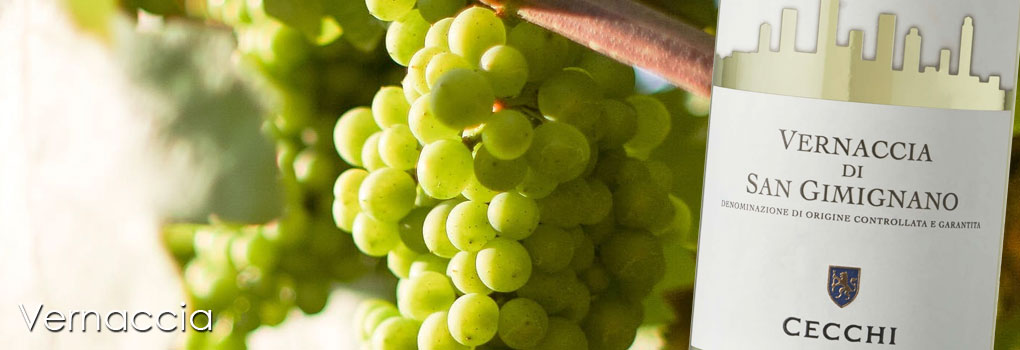
Zibibbo:
Zibibbo is a white wine grape varietal used to produce wine (a sweet wine of the same name) on the Sicilian island of Pantelleria. It is thought that ancient Arab settlers brought the aromatic grape, also called zibibbo ('zibib' is Arabic for 'grape') to the island, and this wine, made before Marsala has been produced there for centuries. The varietal (also know as - Muscat of Alexandria), has similar aromatics to that of Muscat, are left on the vine until they partially ferment in the hot sun and start to raisin.
The resulting wine, locally known as Bianco di Pantelleria, has fortified wine characteristics, but without the addition of brandy, and with a much lower level of alcohol. Zibibbo is a grape varietal that can be used to make anything from crisp table wines to grappa.
The Zibibbo wines that are made commercially by several producers, are a strong wine similar to Marsala - but fermented and then partially distilled naturally, without the addition of grape spirit. The process also differs, in that Zibibbo is actually made from grapes partially fermented in the sun. This is a very old process, and Zibibbo, though not the direct ancestor of Marsala, derives from a process known in the middle ages. Typically slightly lower in alcohol than Marsala (around 15% compared to 18% - 20%) and sometimes more robust.
Until the middle of 19th century the production of grapes was of marginal importance to the local economy. Though more recently, by improving winemaking techniques, a high quality wine product has been reached.
The cultivation techniques are of Egyptian / Arabic in origin, and it demanded the construction of thousands of low stone walls in order to create the farming terraces. At the end of summer you can see the grapes which are dried (on straw mats) under the warm sun of the Mediterranean in order to produce an ideal raisin.
Different wine styles even if all made by using the zibibbo grape, are remarkably different. The 'Moscato' wine of Pantelleria have a dark yellow colour leading to amber and has a strong taste. The 'Passito' wine, has an amber colour, and a remarkably dense fragrance, similar to dried figs, candied fruits and dates.
